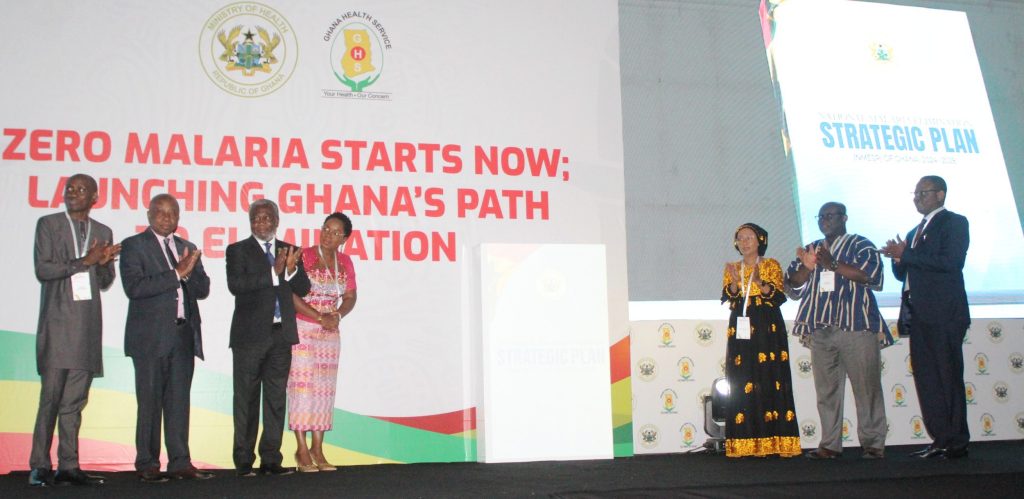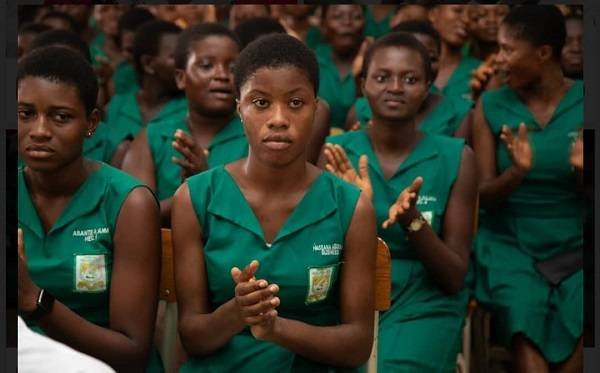

 Dr Paul Boateng, Case Management Focal Person, National Malaria Elimination Programme, says the introduction of the RTSS malaria vaccine has contributed to a sharp decline in malaria morbidities and mortalities among children aged six to 59 months in the last three years.
Dr Paul Boateng, Case Management Focal Person, National Malaria Elimination Programme, says the introduction of the RTSS malaria vaccine has contributed to a sharp decline in malaria morbidities and mortalities among children aged six to 59 months in the last three years.
He said the vaccine together with other interventions targeted at children under five, such as the use on Insecticide Treated Nets (ITNs) indoor residual spraying among others has helped reduce malaria prevalence from 14.1 per cent in 2019 to 8.6 in 2022.
Findings from the 2022 Ghana Demographic and Health Survey (DHS) indicates that malaria prevalence in children aged six to 59 months is 8.6 per cent according to microscopy results.
However, the malaria prevalence among children under five in rural areas is 12.8 per cent, about three times that of urban areas which is 4.3 per cent.
The study shows that Greater Accra has the lowest prevalence of 2.0 per cent, followed by Western North 4.4 per cent and Volta 6.4 per cent.
The regions with the highest prevalence of malaria according to the survey are Oti 15.0 per cent, Upper West 13.4 per cent and the Upper East 12.2 per cent regions.
In all, half of the 16 regions recorded malaria prevalence above 10 percent.
The survey results also indicate that the prevalence of malaria in children has declined over the past eight years, falling by more than a third from 26.7 per cent in 2014 to 8.6 per cent in 2022.
Dr Boateng said data showed, evidently, that the introduction of the malaria vaccine has contributed to the reduction of malaria cases and deaths among children under five, he added that, reducing malaria mortality is one of the areas that Ghana has made gains.
“About 10 years ago, we were recording about 2000 malaria related deaths, but, with consistent works and the vaccine, malaria deaths were around 175 last year,” he said.
In 2019, Ghana joined Malawi and Kenya to launch the Malaria Vaccine Implementation Programme.
As part of a multi-pronged strategy to prevent malaria-related disease and deaths in the country, it targeted children for vaccination in 42 districts across seven regions.
In February this year, the country launched an expansion of the malaria immunization program, which is expected to deliver malaria vaccines to children in 51 additional districts in the seven regions.
The Minister for Health, Mr Kwaku Agyeman-Manu who launched the expansion of the programme said the malaria vaccine is safe, effective, and well tolerated, he encouraged mothers to make their children available to be inoculated when eligible.
Dr Paul Boateng said presently, the vaccine is being administered in 93 districts in seven regions thus the Upper East, Bono, Bono East, Ahafo, Volta, Oti, and Central regions.
He said the vaccine has been safely given alongside other routine immunization in four doses, the first dose is administered at 6 months, the second at seven months, the third at nine months and the fourth at 18 months.
The National Malaria Focal Person said the coverage and the level of the vaccine acceptability has been encouragingly high, with the administration of the fourths dose being the only challenge.
“Coverage for the fourth dose was low because it was given at age two and was not aligned with the other vaccines, we have now moved it to 18 months to align to the measles rubella vaccine, and we have realized that the coverage is improving,” he said.
Dr Boateng said a total of 1,486,770 of the RTSS vaccine has been ad mistered to children in Ghana since May 2019 to December 2022.
He said Ghana intends to scale up the childhood malaria vaccination in all parts of the country based on the vaccine availability beginning from areas with the highest malaria burden, “What has stalled the process is vaccine supply and availability.” He added.
Malaria is a life-threatening disease caused by parasites that are transmitted to people through the bites of infected female Anopheles mosquitoes. It is preventable and curable.
Children under 5 years of age are the most vulnerable group affected by malaria; in 2021, they accounted for nearly 80 per cent of all malaria deaths in the World Health Organisation (WHO) African Region.
People who get malaria are typically very sick with high fevers, shaking chills, and flu-like illness.
In Ghana, the total number of Outpatient Department (OPD) malaria cases recorded in health facilities declined from 6.1 million in 2019 to 5.2 million in 2022.
The East Mamprusi district in the Northeast Region recorded 73,782 the highest number of Outpatient Department (OPD) malaria cases followed by Jaman North 63,776 and Jaman South 55,672 both in the Bono Region.
This report was made possible with technical support from the Center for Science and Health Communication (CSHC) and funding from the National Research Foundation, South Africa.
Source: GNA
The post RTSS malaria vaccine said to reduce malaria cases and deaths in children under five appeared first on Ghana Business News.
Read Full Story












Facebook
Twitter
Pinterest
Instagram
Google+
YouTube
LinkedIn
RSS